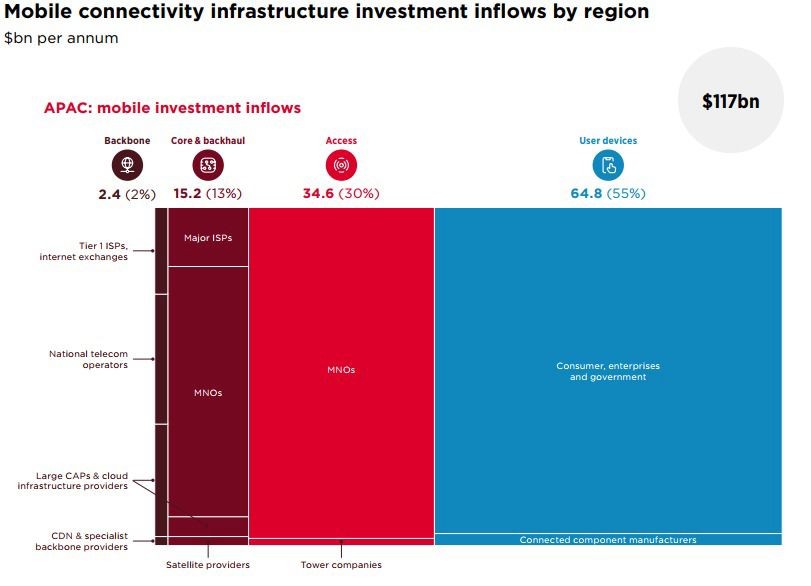TMT Selected News
LOCAL NEWS
Summary of the Merger Plan Between XL Axiata, Smartfren, and Smart Telecom
- PT XL Axiata Tbk (XL), PT Smartfren Telecom Tbk (Smartfren), and PT Smart Telecom (ST) have announced a merger plan, which will be decided at an Extraordinary General Meeting of Shareholders (EGMS) on March 25, 2025.
- The plan has already been approved by the Boards of Commissioners of XL on December 9, 2024, and of Smartfren and ST on December 10, 2024. However, final approval from each company’s EGMS is still pending.
- As part of the merger, all personal data currently held by Smartfren and ST will be transferred to XL, with a commitment to ensuring confidentiality, security, and compliance with Indonesia’s Personal Data Protection Law (No. 27/2022). (InvestorDaily)
Arsjad Rasjid to Be Appointed as President Commissioner of XLSmart (EXCL)
Axiata and Sinarmas will introduce PT XLSmart Telecom Sejahtera Tbk. (EXCL), the merged entity, next week. Arsjad Rasjid will be announced as the President Commissioner of XLSmart. XLSmart will hold a press conference on March 25, 2025. The conference will discuss the latest updates on the merger plan between PT XL Axiata Tbk. (EXCL) and PT Smartfren Telecom Tbk. (FREN). (Bisnis)
Prabowo to Launch GovTech on August 17, Claims It Can Save Rp100Tr from State Budget
Chairman of the National Economic Council (DEN), Luhut Binsar Pandjaitan, revealed that the Prabowo is targeting the launch of Government Technology (GovTech) on August 17. The system is claimed to save up to Rp100tr from the state budget. Luhut stated that President Prabowo Subianto is committed to accelerating government digitalization through GovTech integration. He added that GovTech will unify all ministry and agency applications, enhance efficiency, and minimize corruption risks. (Bisnis)
Indonesia Set to Auction 1.4 GHz Spectrum for Affordable Internet Access
The Indonesian government is preparing to allocate the 1.4 GHz spectrum to provide affordable internet access across the country, with the auction set to take place soon. According to Wayan Toni, Director General of Digital Infrastructure at Komdigi, the process is awaiting the issuance of a Ministerial Regulation. Once finalized, the government will prepare auction documents and make an official announcement. When asked if the auction would be held in April, Toni stated that they aim to proceed as quickly as possible, but the timeline depends on regulatory processes. (CNBC)
Government and Mobile Operators Offer Up to 50% Discount on Internet Packages
The Ministry of Communications and Digital (Kemkomdigi) and Indonesian mobile operators will offer up to a 50% discount on internet packages during the Eid homecoming and Nyepi celebrations in 2025. To support the government’s initiative, operators will also ensure network reliability and stability while providing special packages with greater benefits than regular plans, including discounted data, bonus calls, and enhanced customer service throughout the period. (InvestorDaily)
idEA Projects 15%-20% Growth in E-Commerce Transactions During Eid 2025
The Indonesian E-Commerce Association (idEA) projects that e-commerce transactions in Indonesia will increase by approximately 15%-20% during the Eid 2025 period compared to the previous month. This surge is driven by high consumer spending ahead of Eid, major discounts from marketplaces, and improved logistics services. Despite ongoing pressure on purchasing power, various factors continue to support online transaction growth. For the full year of 2025, total e-commerce transactions in Indonesia are expected to reach last year’s range of Rp500-900 tr, though growth may slow due to increasing economic pressures. (Kontan)
OTHER FOREIGN TRENDS
9 Telecom Insights From Mobile World Congress Barcelona 2025
Key Announcements:
- HPE Aruba Networking launched the CX 8325P telco-grade switch, enhancing AI-driven workloads with nanosecond accuracy and simplified management for private networks.
- AMD, Cisco, Nokia & Reliance Jio partnered to build an open AI platform, aiming to make AI more accessible in macroeconomically challenged regions.
- AST SpaceMobile & Vodafone formed “SatCo” to expand satellite-based mobile coverage across Europe, with potential applications in aviation, agriculture, and autonomous driving.
Companies to watch:
- floLIVE impressed with its hyperlocal global network solutions, catering to industrial IoT and private 5G needs.
- Inseego is making a comeback with its 5G focus, led by new CEO Juho Sarvikas and leveraging Qualcomm’s Dragonwing FWA Gen 4 Elite platform.
- Spectrum Effect is helping telcos optimize spectrum use with AI-powered RAN interference detection.
Tech Video Highlights:
- Palo Alto Networks introduced Prisma SASE 5G, enhancing network security while driving new monetization opportunities.
- Intel showcased advancements in AI acceleration, network virtualization, and telecom partnerships with Ericsson, Nokia, and Samsung.
- Ericsson led the push for 5G Standalone, focusing on network slicing, AI-optimized RAN, and private networking.
MWC 2025 highlighted AI-driven innovation, private networking, and telecom infrastructure advancements, shaping the future of connectivity. (Forbes)
Oracle to provide cloud computing, AI services to Singapore military
Oracle has secured its first Southeast Asian defense deal, partnering with Singapore's defense technology arm to provide "isolated" cloud computing and AI services. The U.S. tech firm will implement an "air-gapped" infrastructure, disconnected from the internet and linked to classified networks via encrypted devices, enhancing cybersecurity for Singapore's armed forces and defense ministry. Oracle Global Defense CTO Rand Waldron highlighted that the AI technology will support data and imagery analysis, including facial recognition and vehicle identification from video streams. As cyber threats and supply chain attacks rise in the region, Oracle continues to expand its Southeast Asian presence, having announced a $6.5bn investment for a cloud region in Malaysia last October. (Reuters)
Nvidia will spend hundreds of billions on US manufacturing
Jensen Huang announced that the company will invest "several hundred billion" dollars in US semiconductor and electronics manufacturing over the next four years, as part of a broader effort to reduce reliance on Asian supply chains amid geopolitical uncertainties. Speaking to the Financial Times, Huang emphasized Nvidia’s ability to manufacture in the US and diversify its supply chain, particularly as tensions with China and Taiwan's geopolitical risks grow. The move aligns with Trump's "America First" policy, which has influenced major tech firms like Nvidia and Apple to reconsider their global production strategies. Nvidia's expansion is further supported by TSMC’s recent US$100bn investment in US chip manufacturing, which enables the production of Nvidia’s high-end Blackwell chips domestically, strengthening supply chain resilience and bolstering the US AI industry. (TheGuardian)
Vietnam to Build First Chip Factory Worth Rp8.2Tr
The Vietnamese government has approved the construction of its first semiconductor wafer manufacturing plant, with a total investment of $500mn (around Rp8.2tr). The facility is expected to be completed before 2030, marking Vietnam’s ambition to become one of the world’s leading semiconductor producers between 2040 and 2050. According to a report by TrendForce, the plant will focus on producing specialized chips for AI, defense technology, and other applications. (DetikInet)
Scepticism over CoreWeave's IPO, Microsoft opting out from its contract option with CoreWeave
Microsoft opted not to purchase additional data center capacity from CoreWeave (Nvidia owns 6%), signaling strategic shifts in AI spending rather than overall reductions. However, Microsoft maintains an $80bn commitment to AI infrastructure.
OpenAI Quickly Replaced Microsoft: OpenAI immediately took over Microsoft's declined contract, though indirectly funded by Microsoft due to their financial backing.
IPO and Valuation Concerns: CoreWeave aims to raise $2.7bn via IPO, targeting a valuation of $25bn. Despite a substantial 747% revenue increase to $1.9bn in 2024, the company reported a loss of $863mn. Jeffrey Emanuel (the person who pointed first on DeepSeek significance) compared CoreWeave’s leasing-based business model to WeWork’s, highlighting significant risks if demand weakens.
High Customer Concentration Risk: CoreWeave depends heavily on Microsoft, accounting for 62% of its revenue, raising risks if Microsoft shifts to its own infrastructure.
Competitive and Financial Risks: Leasing rather than owning data centers increases financial vulnerability to demand fluctuations. Analysts question CoreWeave’s competitive advantage, suggesting its software and infrastructure lack uniqueness compared to peers. Microsoft's expansion of its Azure data centers may decrease future reliance on CoreWeave.
Wall Street’s Divided View: Analysts are split: some see CoreWeave benefiting significantly from AI growth, while skeptics challenge its long-term sustainability and inflated valuation.
Broader AI Market Implications: Investor sensitivity to AI spending decisions is high, with CoreWeave’s IPO viewed as a critical test for the sector’s financial viability. The AI economy remains dominated by key players such as Microsoft and Nvidia. (Semafor, MarketWatch)
Excerpt from GSMA/AT Kearney: Mobile Infrastructure Investment Landscape Mar.25
Total annual global investment in internet connectivity infrastructure, averaging $462bn per year from 2019-2023. Investments are presented by category type and network element:
Categories:
- User devices: $140.1 billion
- Access infrastructure: $219.5 billion
- Core & backhaul infrastructure: $82.7 billion
- Backbone infrastructure: $19.6 billion
By type of network:
- Mobile infrastructure: $243.9bn
- Fixed infrastructure: $212.2bn
- Satellite infrastructure: $5.8bn
The analysis includes telecom operators' network-related capex but excludes wider expenses like IT, CRM, or facility capex. While satellite-based services (e.g., Starlink) experience rapid investment growth, they remain just 1% of total investments. Overall, global network infrastructure capital expenditure has remained relatively stable over the past decade.
$244bn went to mobile globally.
The largest regional investment is in the Asia Pacific (APAC) region, including China, accounting for $117bn, North America: $55bn, Europe: $38bn, Middle East and Africa: $19bn, Latin America: $15bn


Microsoft Malaysia to launch three data centres in Q2 2025
- Microsoft will open its first cloud region (Malaysia West cloud) with three data centers near Kuala Lumpur by mid-2025.
- This follows a $2.2bn investment Microsoft announced in May last year to expand cloud and AI services in Malaysia over the next four years.
- Microsoft expects the investment to generate ~$10.9bn in revenue and create over 37,000 jobs in Malaysia.
- The investment positions Malaysia as a key regional hub for cloud computing and AI growth in SE Asia.
- Microsoft indicated it is not currently experiencing disruptions related to U.S. export restrictions on semiconductor chips to Malaysia and maintains good relationships with stakeholders. (Reuters)
Nvidia CEO and Cisco CEO discuss the global outlook on the AI arms race
Nvidia CEO Jensen Huang and Cisco CEO Chuck Robbins, in an interview with CNBC’s Jim Cramer, highlighted the global race for AI dominance, emphasizing its strategic importance to world leaders. Robbins noted that the Trump administration is committed to maintaining the U.S. lead in AI, despite concerns over trade policies affecting semiconductor imports. Meanwhile, Nvidia and Cisco announced a partnership to enhance AI infrastructure for enterprises, with Huang stating that AI has fundamentally reshaped computing, requiring businesses to revamp their entire technology stack to stay competitive. (CNBC)
Tencent joins China's AI spending race with 2025 capex boost
Tencent announced plans to increase capex in 2025 to further strengthen its AI development and infrastructure, with spending projected to remain in the "low teens" as a percentage of revenue. The company’s 2024 capex surged to US$10.7bn, driven by a major push into AI, including investments in its proprietary Hunyuan model and integration of DeepSeek technology into key products like WeChat and Yuanbao. Tencent’s AI assistant Yuanbao has seen explosive growth, becoming China’s most downloaded iPhone app in March. Despite slowing capex growth, Tencent posted a strong fourth-quarter performance, with revenue rising 11% to 172.4bn yuan (US$23.8bn), fueled by a rebound in the gaming sector. The company also introduced Hunyuan Turbo S, an upgraded AI model, and new AI tools for generating 3D visuals, reinforcing its competitive stance in China’s AI race alongside Alibaba and ByteDance. (Reuters)
To see the full version of this News, please click here


